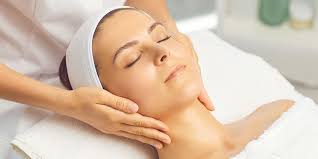
Massage and Mental Health: How Regular Sessions Can Boost Your Mood
Massage therapy has long been praised for its capacity to alleviate stress, ease muscle tension, and enhance overall health. Whether you’re seeking relief from chronic pain or simply aiming to relax, understanding the basics of massage will help you get the most of this therapeutic practice.
Types of Massage
There are many massage techniques, each one adapted to address specific needs:
Swedish Massage: It’s one of the well-known kinds, which involves long, smooth strokes, kneading and circular movements on the uppermost layer of muscles. It’s ideal for relaxation and enhancing circulation.
Deep Tissue Massage The technique is targeted at the deeper layers of connective tissue and muscle. It is particularly beneficial for chronic muscle pain and stiffness, often involving slow strokes and greater pressure.
Sport Massage: Created specifically for athletes for athletes, this massage assists in preventing and treating injuries, improve flexibility, and enhance performance. It is used prior to and after sporting activities to target specific muscles.
Trigger Point Therapy: The technique is focused on identifying and releasing tight areas within muscles, known as trigger points. These areas can cause pain in other regions of the body.
Hot Stone Massage: The heated stones can be used to relax muscles and improve circulation. The warm stones help to relieve tension and facilitate deep relaxation.
Benefits of Massage
Massage therapy offers a range of benefits that go beyond relaxation. Regular sessions can:
Reduce Anxiety and Stress Massage can lower levels of cortisol which is a stress hormone, while boosting dopamine and serotonin, which help improve mood and reduce anxiety.
Improve circulation: The manipulation of muscles and tissues can improve blood flow, which could help in healing and improve overall cardiovascular health.
Reduce Tension and Muscle Pain Through targeting specific muscle groups and releasing knots massage therapy can alleviate chronic pain and reduce muscle soreness.
Enhance flexibility and range of motion: Regular massage helps to keep joints flexible and muscles flexible that can increase the overall flexibility and reduce injuries.
Choosing a Massage Therapist
When choosing a massage therapist, consider their qualifications, experience and areas of expertise. Look for licensed practitioners who have completed accredited training and have a good reputation. Communicating is essential. Discuss your particular needs and any health concerns with your therapist prior to beginning a session.
Safety and Considerations
While massage (마사지) therapy is generally safe, it might not be suitable for everyone. Speak with your doctor if you have underlying medical conditions or are pregnant. It’s also important to stay hydrated before and after your massage to assist in the process of detoxification.
In the end, whether you’re looking to unwind, relax or revitalize, massage therapy offers a array of benefits that boost your physical and mental wellbeing. By understanding the different types of massage and their benefits to you, you can make educated choices and incorporate this healing practice into your wellness routine.